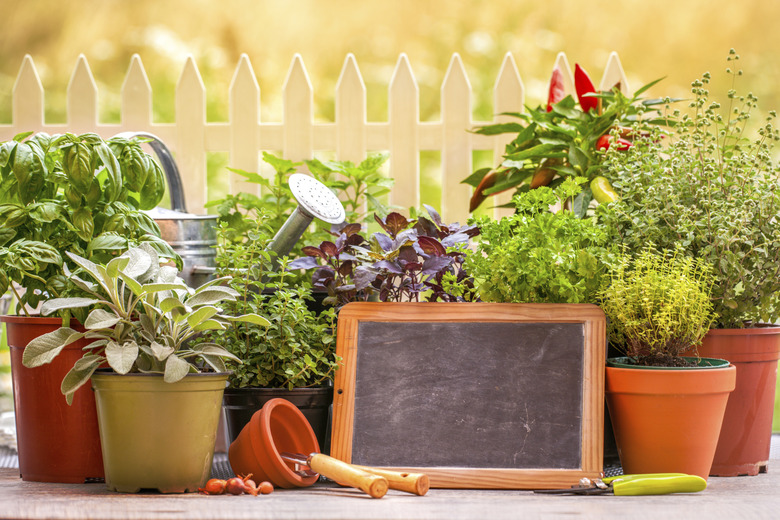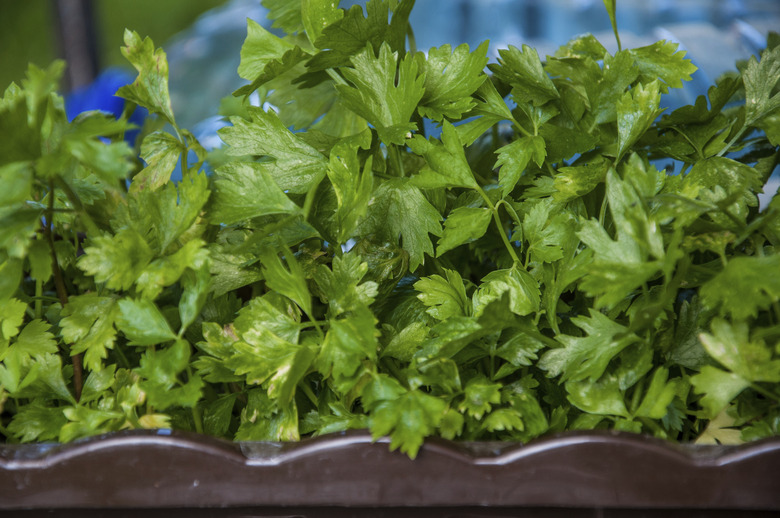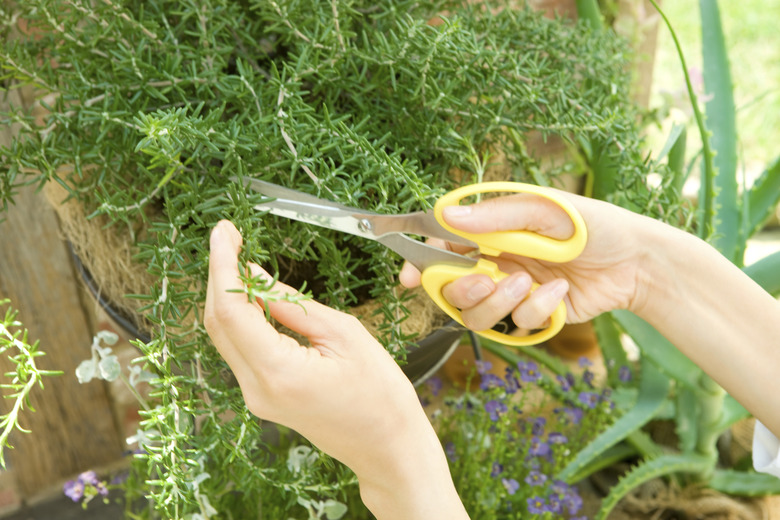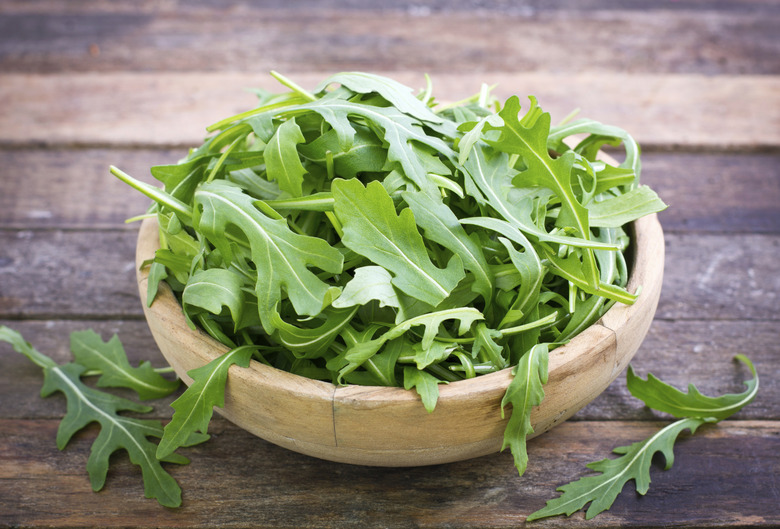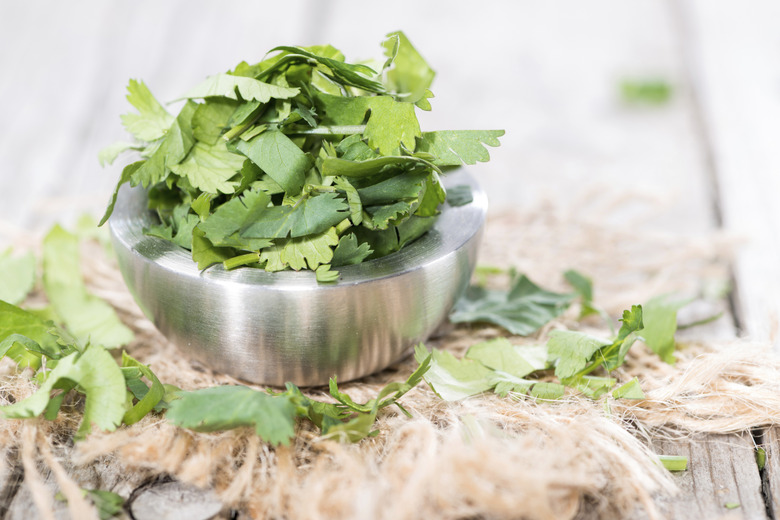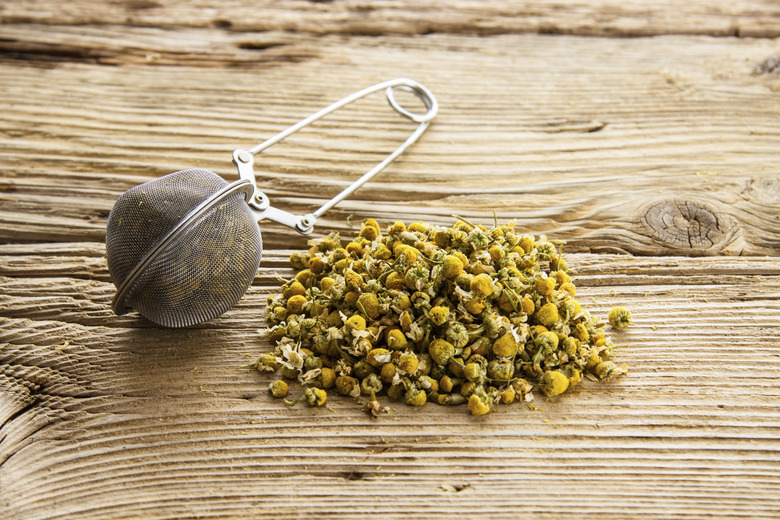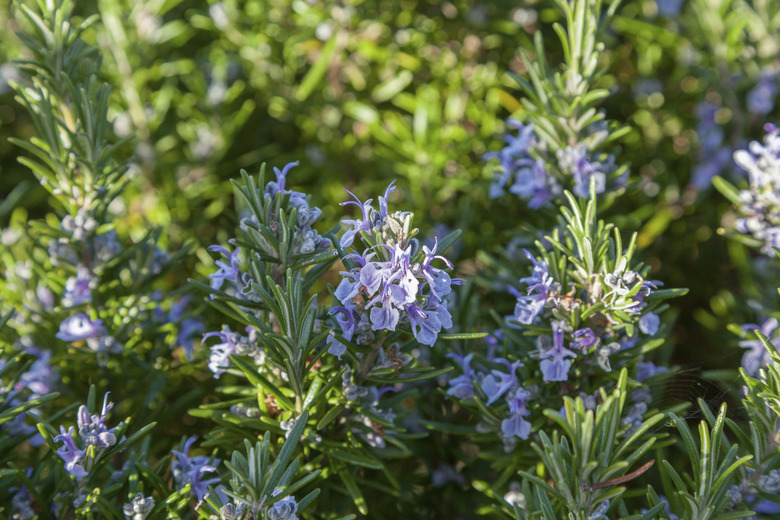Herb Plants That Can Be Potted Together
Tip
Almost all herbs need at least 6 hours a day of sunshine. If your yard doesn't offer continuous sun, move those pots around to sunny corners.
Warning
Look out for mint (Mentha spp., zones 3 – 9). If you have it in your garden, you want it in a pot since it takes over ground quickly and can be invasive. But don't mix it in with other culinary herbs since it will bully them for space in very short order.
Sad but true: herbs have to bloom where they are planted, regardless of whether or not they like their neighbors. Almost all herbs can coexist, but you'll save water and get better results if you combine plants that have similar sun, soil and water preferences. It's also fun to group herbs thematically.
Thirsty Herbs
Thirsty Herbs
Put your thirstiest herbs together in the same pot, mixing colors and textures. Combine one "thriller plant" — an impressive upright plant that appreciates damp soil, like parsley (Petroselinum spp.) or basil (Ocimum basilicum) — to catch the eye. Add leafy French tarragon (Artemisia dracunculus var. sativa) as a filler, and chives (Allium schoenoprasum) to droop over the edges of the pot. French tarragon is hardy in U.S. Department of Agriculture plant hardiness zones 2 through 9, while chives thrive in zones 4 through 8.
Parsley, Sage, Rosemary and Thyme
Parsley, Sage, Rosemary and Thyme
Sage (Salvia spp., zones 5 – 10), rosemary (Rosmarinus officinalus, zones 8 – 10) and thyme (Thymus spp., zones 2 – 10) grow happily together. Unlike parsley, all three prefer less water and soil that's kept on the dry side. Plant them in an unglazed terra-cotta pot that absorbs water. Add a tall "Mediterranean" herb like lavender (Lavandula angustifolia, zones 5 – 9) or dill (Anethum graveolens, annual). Add oregano (Origanum vulgare, zones 4 – 9) to provide the side frills.
Annuals -- Enjoy Them While They're Here
Annuals — Enjoy Them While They're Here
Here today, gone tomorrow: annual herbs last for only one growing season. Try an annual herb salad container starting with borage (Borago officinalis) as the thriller, with its deep blue flowers perfect for salad accents. Surround it with herbal salad greats like arugula (Eruca vesicaria), chervil (Anthriscus cerefolium) and summer savory (Satureja hortensis); then trail nasturtium (Tropaeolum majus) around the edges. All like ample water and well-drained soil.
South-of-the-Border Flair
South-of-the-Border Flair
Pot up a selection of herbs to use in Mexican cooking. Start with cilantro (Coriandrum sativum) for its pungent, bright, abundant leaves. Tuck in epazote (Chenopodium ambrosioides) to flavor black beans, then fill in with little cumin plants (Cuminum cyminum) whose pink flowers produce the seeds that add an assertive flavor note to Mexican sauces and soups. A small hot pepper plant (Capsicum annuum) adds flair to the affair. All like full sun, regular watering and soil that drains easily.
Herbal Tea Collection
Herbal Tea Collection
Herbal teas are made from herbs, so tea lovers might unite a few favorite choices in one container. Chamomile (Chamaemelum nobile) is an easy-to-grow annual, and combines beautifully with "lemon" herbs like brilliant tufts of lemon verbena (Aloysia triphylla, zones 8 – 10), lemon balm (Mellisa officinalis, zones 3 – 9) or lemon grass (Cymbopogon citratus, zones 9 – 10). All prefer sun and regular irrigation.
Rosemary For Remembrance
Rosemary For Remembrance
Shakespeare's Ophelia tells us that rosemary is for remembrance, and the fragrant perennial herb is a good start for a container of flowering herbs. Rosemary's tiny sapphire flowers also attract butterflies and make bees happy. Add rue (Ruta graveolens, zones 4 – 7) for its woodsy fragrance and sunny yellow flowers that will mix nicely with the tiny daisy-like blossoms of feverfew (Tanacetum-parthenium, zones 4 – 9.)
References
- National Gardening Association: Herbs
- University of California: Culinary Herbs in the Garden
- Clemson University Extension: Herbs
- O'Reilly's Garden Center: Herbs, the Easy and Convenient Way
- Floridata: Ruta Graveolens
- Missouri Botanical Gardens: Rosemarinus Officinalis
- Floridata: Cymbopogon Citratus
- Monrovia: Lemon Verbena
- Floridata: Melissa Officinalis
